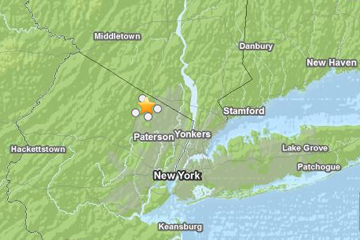Did Sandy Cause New Jersey Earthquake?


Even the second-most powerful hurricane on record can't cause an earthquake. A small quake that rattled already frayed nerves this morning (Nov. 5) in New Jersey wasn't sparked by Sandy-caused flooding.
"It's very possible that the earthquake this morning would have occurred anyway even if we hadn't had Sandy come through," said John Ebel, a geophysicist and director of the Weston Observatory seismic network at Boston College in Massachusetts.
Researchers have documented cases where flooding caused earthquakes, Ebel told OurAmazingPlanet. But those instances involved filling large reservoirs behind dams, where at least 100 feet (30 meters) of water lay over an earthquake fault, he said. These settings allow water to trickle down miles underground through fractures in the Earth, until it reaches the fault beneath the reservoir. There, water acts as a lubricant for the fault, making it easier to slip and trigger an earthquake.
The storm surge from Hurricane Sandy was about 10 feet (3 m), and has receded.
Weston's seismic network does monitor the impact of big storms on earthquakes in the Northeast, and didn't see earthquake activity after Hurricane Irene or other heavy rainstorms, Ebel said. "When we have large rainstorms in New England we don't see an uptick in earthquake activity, and the same is true in other parts of the world," Ebel said.
However, in the Himalayas, where the monsoons bring a year's worth of water in the form of rain, there could be a link between the storms and earthquakes. There are twice as many small earthquakes during the winter months (December to February) as during the summer. Some scientists think changes in groundwater levels linked to the monsoon supply trigger these small quakes.
Seismometers in northern Pennsylvania did detect the punishing waves of Sandy's storm surge, though.
Get the world’s most fascinating discoveries delivered straight to your inbox.
The 1:19 a.m. New Jersey quake, with a preliminary magnitude of 2.0, was centered 2 miles (4 kilometers) south-southeast of Ringwood, N.J.
In sheer power, Hurricane Sandy ranks second among modern hurricanes, beating even Hurricane Katrina.
Reach Becky Oskin at boskin@techmedianetwork.com. Follow her on Twitter @beckyoskin. Follow OurAmazingPlanet on Twitter @OAPlanet. We're also on Facebook and Google+.



